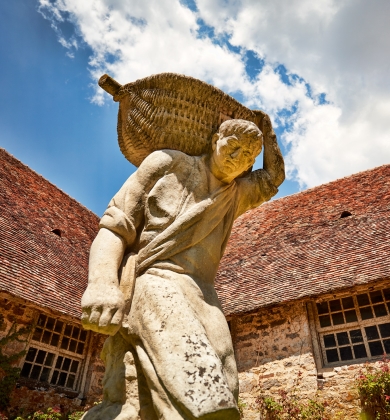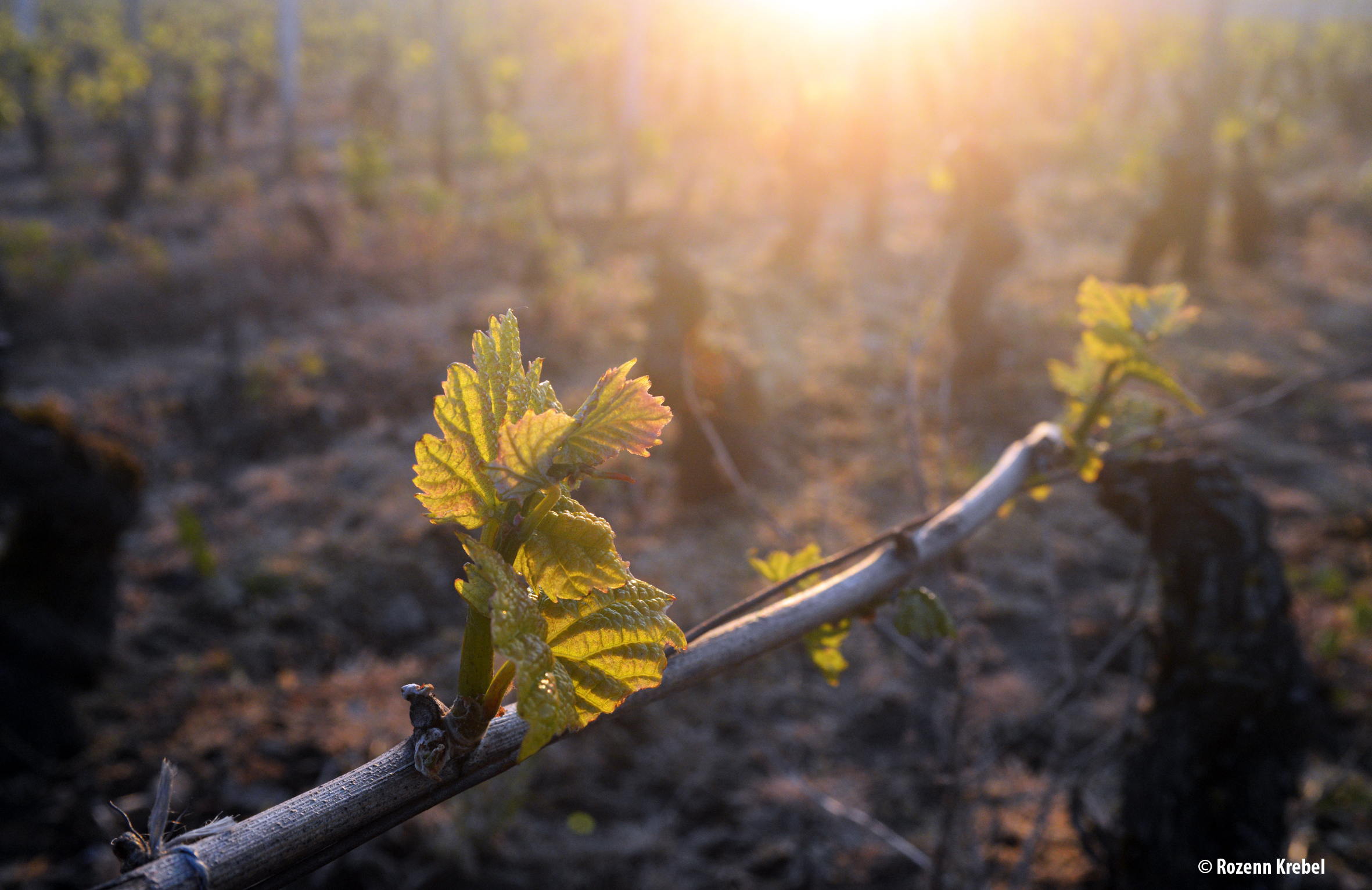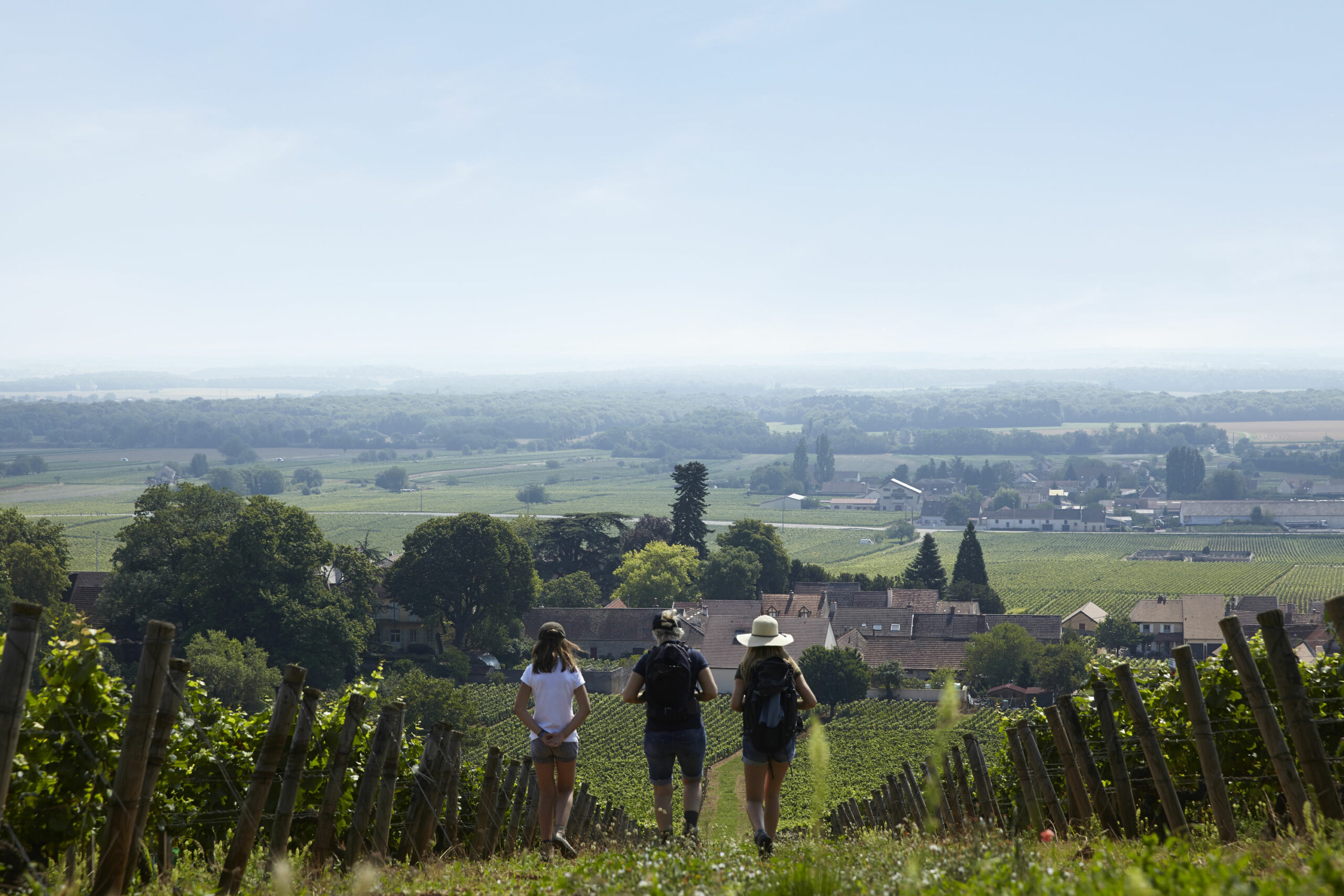The Côte de Nuits is a three-dimensional green setting, a paradise for hiking and biking enthusiasts.
Overlooking the hills of Gevrey-Chambertin down to the Corton woods, the Hautes-Côtes, made up of plateaus and valleys, provide landscapes that change depending on altitude and exposure. Vineyards stand alongside cereal and red berry plots, and the limestone cliffs in the background link earth and sky together. Here, the small roads and trails will delight bike riders and hikers, who will discover the preserved villages, full of cultural, historical and gastronomic attractions, as they explore the Hautes-Côtes.
A few hundred meters wide, the Côte Viticole proudly stretches some 600 metres upwards before the Jura mountains and the Alps, where Mont Blanc can be spotted on a clear day. Further down, the viticultural villages are the perfect setting for the region’s clos: Couchey, Fixin, Brochon, Gevrey-Chambertin, Morey-Saint-Denis, Chambolle-Musigny, Vougeot, Flagey-Echézeaux, Nuits-Saint-Georges. Hikers will have a great time on the many hiking trails that travel across this incredible landscape, while bicycle enthusiasts will enjoy the Voie des Vignes, a bicycle route in the heart of the vineyard.
The Plaine is an opportunity to rest and breathe, with landscapes of forests, ponds and streams. Once a land of passage on the North-South axis, the Plaine still retains traces of the past with several post houses and religious monuments, the most symbolic being the Notre-Dame de Cîteaux Abbey, founding abbey of the Cistercian order that spread throughout the world. The monks have been living in the Plaine since the 11th century in monastic purity, combining prayer with their work on the land and in the vineyards.





